Setting The Table with Taylor Long
In conversation with Nomads Swimwear founder, designer, and CEO
I am so, so thrilled to be debuting my new conversation series, Setting The Table, with a true powerhouse who is making waves in the size-inclusive fashion space and beyond.
I intend for this series to feature individuals who are making room at the table for those who have not previously been invited to sit— something that is more important now than ever. In these interviews, we’re pulling chairs up and inviting you into the conversation with us.
Our first guest is Taylor Long— founder, CEO, and designer of size-inclusive brand Nomads Swimwear.
In this conversation:
Why an XXL is a straight size but a 2X is a plus size
What brands get wrong about extended sizing - and how to do it right
Why we think big / legacy brands fall short on serving the plus size consumer
Whether the many reasons those brands give for their exclusivity are bullshit or not
And so much more! It’s a long one, but hopefully it’s fun and easy reading.
Be sure to read to the end to see how Nomads is celebrating their 5th anniversary in NYC this weekend— and how you can be a part of it.
We kicked off the celebration last night, where I moderated a panel between Beth Hitchcock of Fluffi, Chrissy King, author of The Body Liberation Project, and Taylor Long of Nomads Swimwear, all about the importance of building brands with inclusivity and empathy at their core.
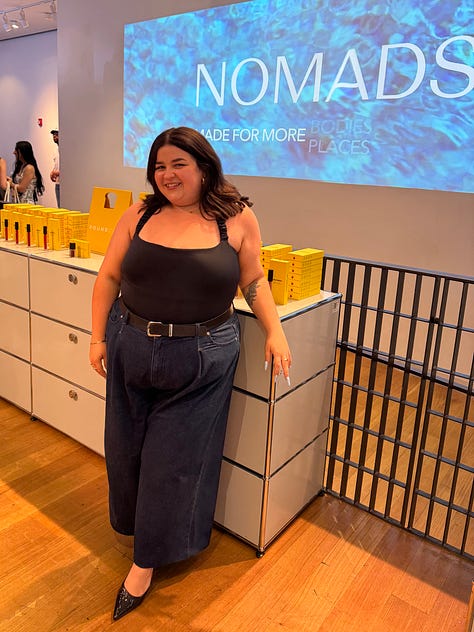
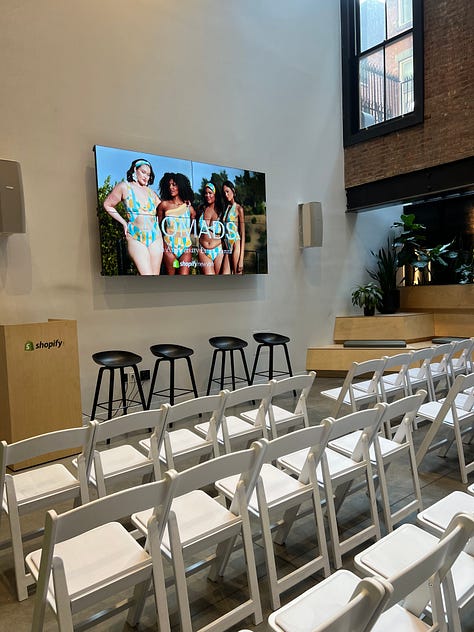
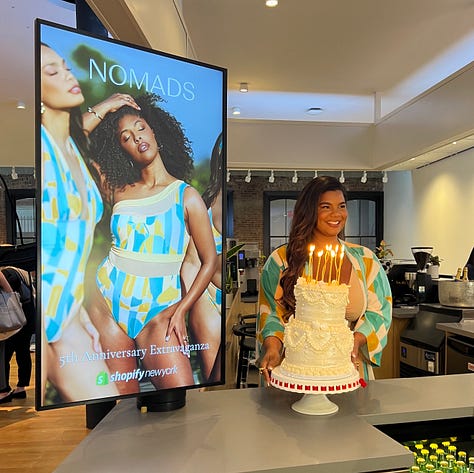
Without further ado, let’s get into this chat with Taylor Long of Nomads Swimwear.
Jordan Bogigian: Taylor! Thank you for being the inaugural interviewee for Setting the Table. Can you give us a quick intro into who you are and tell us about your brand?
Taylor Long: I am a plus size model, designer, size inclusivity advocate, and the founder and CEO of Nomads Swimwear. Nomads is a size inclusive, sustainable swimwear and resort wear brand with pieces in sizes XS to 5X using cutting edge biodegradable and compostable fabrics.
JB: You guys are celebrating five years this month, which is so crazy.
TL: It’s very surreal. Most small businesses fail within the first five years, so, this is a monumental occasion. Hence why we're celebrating in such exciting fashion!
JB: We’ll get into the celebration plans soon. Yes, five years is a big milestone regardless, but I was also thinking this morning that of course five years ago was the height of COVID. So you launched a destination-inspired swimwear brand in July of 2020, which is even more of a testament to the fact that we truly need brands like yours so much. I mean, people were not traveling or doing destination anything in July of 2020 and the fact that you have been able to not only survive but thrive— it speaks volumes.
TL: I do think there's something to be said about people craving a sense of wanderlust and escapism, even if it was simply buying something for that high. But timing-wise, I was like, if I don't do it now, global pandemic and all, I'm not going to do it ever.
JB: Well, obviously it worked out and I'm so glad that you did. Which also leads me to the fact that this interview is so full circle for me. Not only is Nomads turning 5, but we also met around that time! I was around in the very beginning helping out with social media and have been a friend of the brand ever since. I’m so glad to kick off Setting the Table with you— you embody everything I want this series to be.

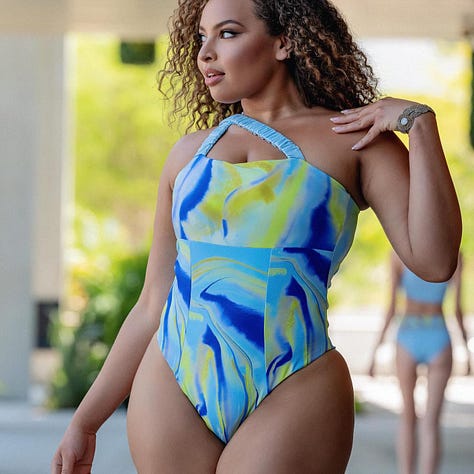


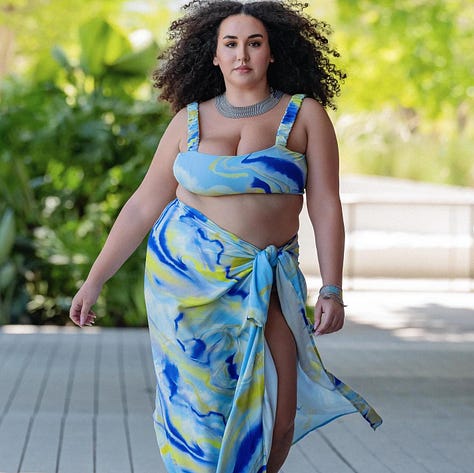
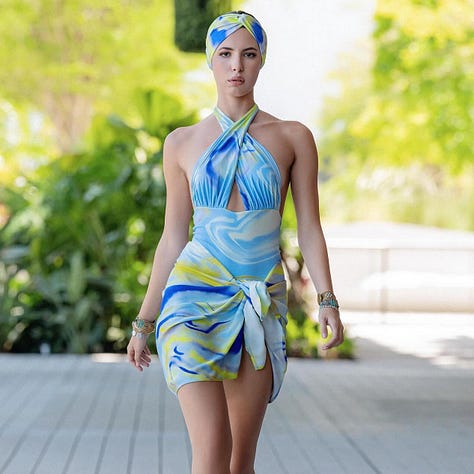
JB: Let’s start with a question that I always like to ask people in general because I think it shapes so much of who you become as a person. What was your relationship like with like clothes and shopping when you were young?
TL: I have been a lifelong fashionista, shopaholic, and beauty junkie. No one that knows me from growing up is shocked by this career path. At least they shouldn't be. I was always wanting to shop. I even had this Teen Vogue careers book because I always knew I wanted to be in fashion but I just didn't know exactly how. I remember distinctly with the brands that we grew up with - like Abercrombie, and before that Limited Too - not being able to wear the same things as my friends. So I think that definitely played a part in my viewpoint on the industry.
JB: Very much same on all fronts. So obviously those interests led to this career path. Can you talk a little bit about your path to deciding to be a designer? I know especially your fashion school experience was very formative in figuring out that this was what you wanted to do.
TL: I played competitive volleyball and got a scholarship to go to Jacksonville State University in Alabama. They did not have a design program, but they had fashion merchandising and part of that degree was to take sewing classes. So I got that introductory lesson into fashion.
I was there for two years and then after my sophomore season, our coach got fired. There's never a guarantee that a new coach coming in is going to keep you, so I took that opportunity to look elsewhere and settled on the University of Cincinnati’s design program. There were two different tracks— you could either do design or you could do product development which was essentially trend forecasting, and that didn't interest me as much. So I went the design route.
JB: It's so funny because I also went to fashion school and I had the opposite experience. My degree was in an engineering program so they taught a lot of technical classes like Computer Aided Design and quality control and sewing, and I was like I will take trend forecasting and fashion history please! Which is very much how I ended up where I am.
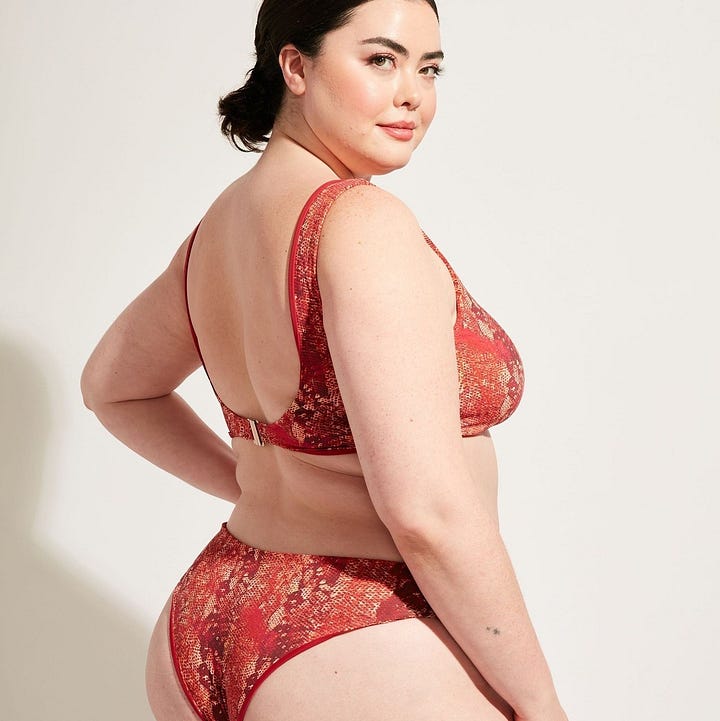
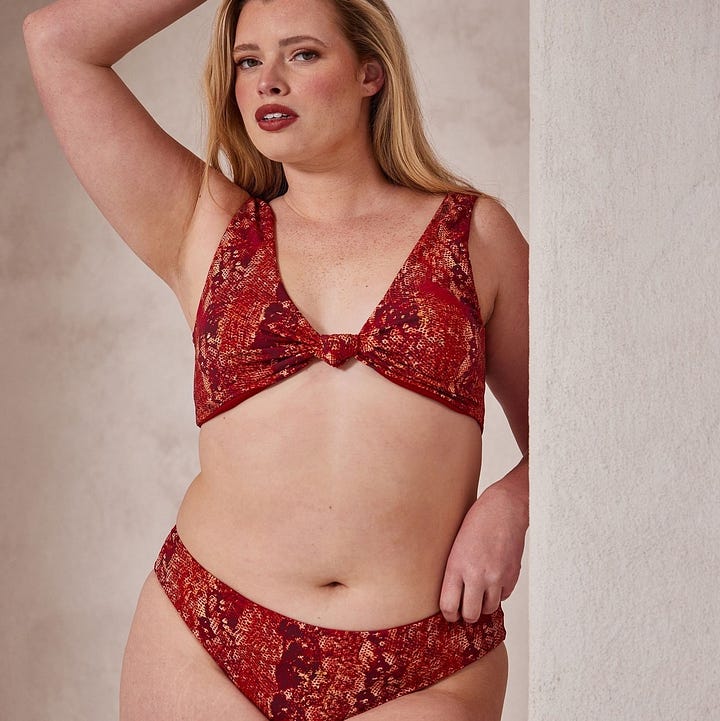
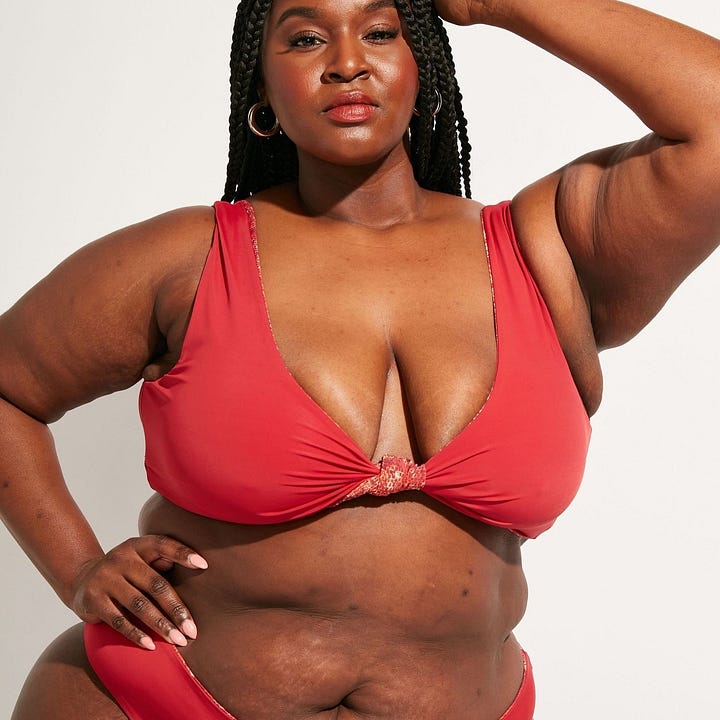
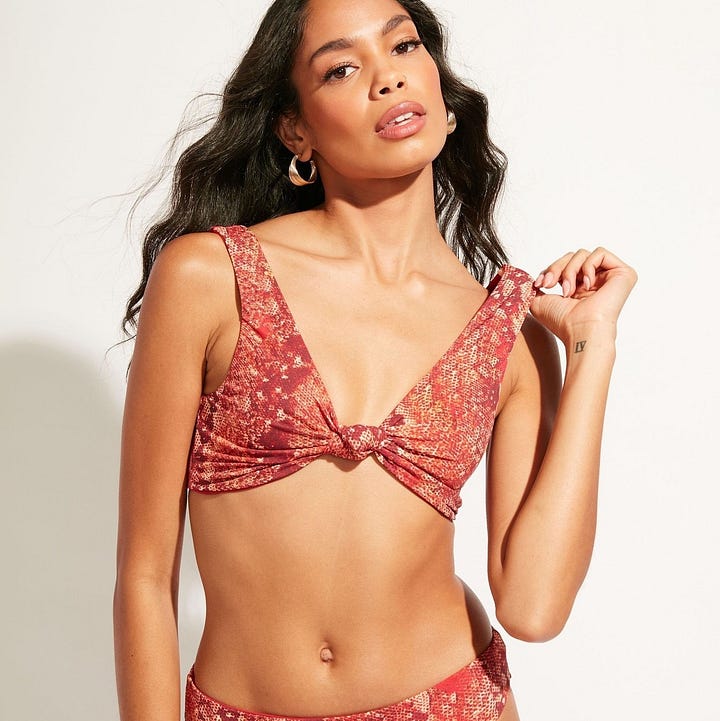
JB: So you started Nomads while you were still in school. Tell us about that.
TL: When it came time to do my senior capstone collection, I had just come back from Australia because by this time I had started modeling. I had taken all these photos and I was like, "Oh, these would make really cool prints for something."
Eventually I landed on swimwear after thinking about my experiences as a model. I wasn't always plus size, so I didn't know how bad the options were. When I began working and getting booked as a plus size model and I was seeing what was available, I was like… these are hideous. I would never go to the store and buy these. That really stuck with me. It was a lot of tankinis and skirts and swim shirts.
So I decided to do size inclusive swimwear as my capstone. It was not well received by my professors at all. I remember in our muslin critique, which is where you're in the beginning phases working out the kinks of your patterns, they asked me why there were no tankinis or skirts and said that my plus size model was too busty for a one shoulder. They said the suits were too revealing. And I was just like, okay, this is exactly what I’m trying to counteract. You're proving my point.
I was documenting the process on social media and pretty early on, before I'd even finished, I was getting enough interest from people who were seeing what I was posting and they were saying, "If you make this, I will buy it."
And then a month after I graduated, I went into development, which is insane.
JB: Um, yeah!
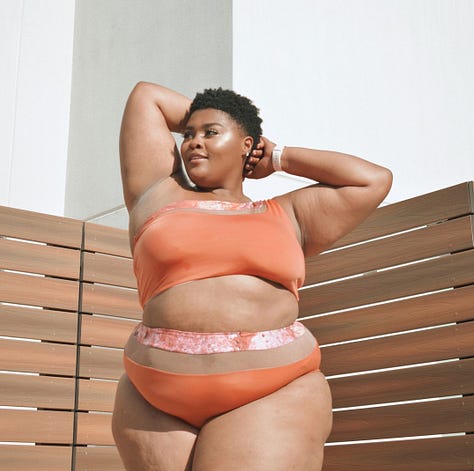
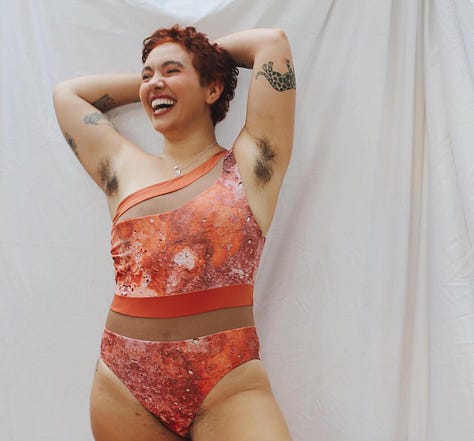

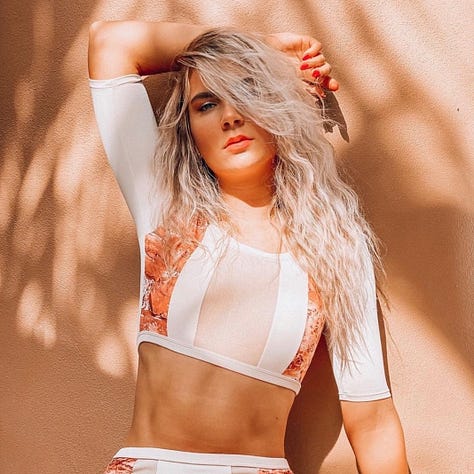
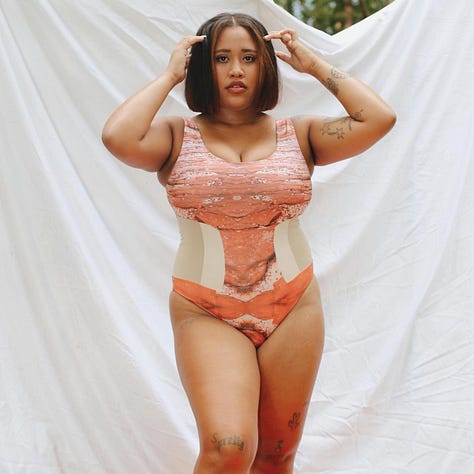
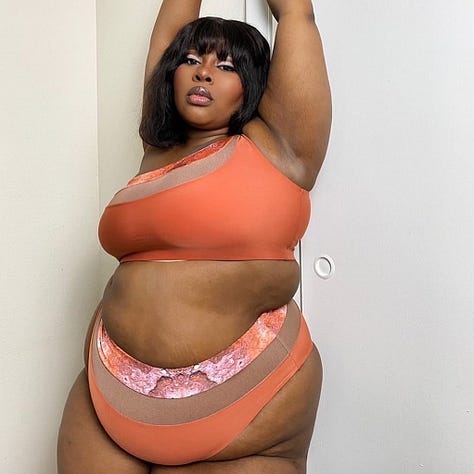
TL: I don't know how to do everything, but I am willing to learn anything. And I think that's one of the most important parts of being a founder—you just have to be so open to learning and being okay with not knowing everything.
JB: Well that’s also important because you weren't taught to design for a wide range of bodies, right? And obviously that's something that you do. Did you teach yourself how to do that?
TL: I did. It was a lot of trial and error. For the entire design program, with hundreds of students, we had two plus size dress forms. Luckily for me, I guess, nobody else was interested. So, I always had a form, but god forbid more than just me wanted to learn how to do that. It was a lot of teaching myself because while it's not overly difficult, it is a different skill set.
JB: Which leads me to my next question which is about designing for both straight size and plus size. I think a lot of people do not understand the the intricacies of that. What do you feel like is most interesting or notable to share about that?
TL: I think the way that we do it at Nomads is kind of unique because I truly sit in between the two ranges. Sometimes I can fit an XL and sometimes I’m a 1X. I know what I'm looking for as far as fit goes, so I like to make all those initial tweaks first in a size XL on myself and then we grade down to a S and then we grade up to a 5X which has seemed to work well. We do check the fit at the S and the 2X just to make sure that it's correct. But I find that starting in the middle makes it so much easier than if you were try to start from a small and then try to go all the way up because the body is so different at those sizes.
JB: And the smaller you start and the further you try to grade up from there, obviously the proportions grow at a rate that maybe are not correct for what is actually needed for the body.
TL: Right—the grade roll even changes. For straight sizes it's two inches, for plus we do three. So there's that little tidbit too. If you're just going two inches all the way, it's not going to be an accurate fit.
JB: That's really interesting. Besides the fact that you’re making straight sizes fit correctly for that range and same for plus sizes, do you make any design changes between the two ranges or are they the exact same pieces?
TL: The only thing we change sometimes is the width of the gusset and crotch seam.
JB: And thank god for that because I need that.
TL: Most of us do! So that’s a small fit consideration, but on the whole I don’t make any changes. I want there to be continuity between the straight and plus sizes. I don’t believe in making something less revealing or more covered up just because the person buying it is plus size.
JB: Exactly, and that’s how it should be. We don’t see many brands making this vast a size range, but when they do they often make these unnecessary changes to the larger sizes because of their misperception of what the larger customer wants. Making them less revealing, or removing the cut outs - generally taking away what makes the piece interesting - because they think we don’t want that.
TL: Well and that’s their own internal biases coming through too, right? It's them putting their thought of what is - and I hate this word - flattering for a larger body, but it's not for us as a designer to decide for the customer.
JB: I mean to your point, the size of your body does not dictate your taste or your style personality. I think that's such a big widespread issue - the (often willful) misunderstanding of the plus size consumer and refusal to acknowledge that we have the same range that thin consumers have too.

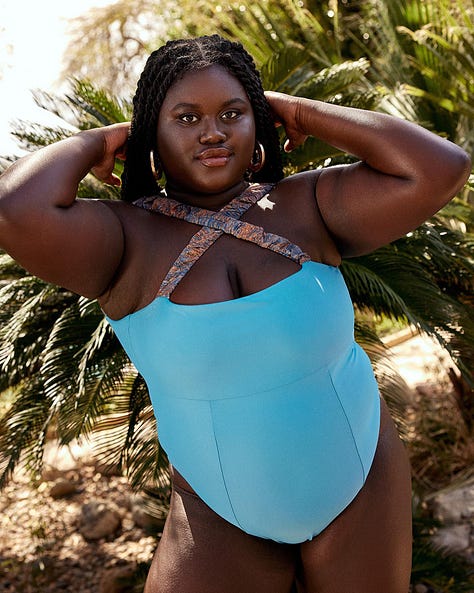
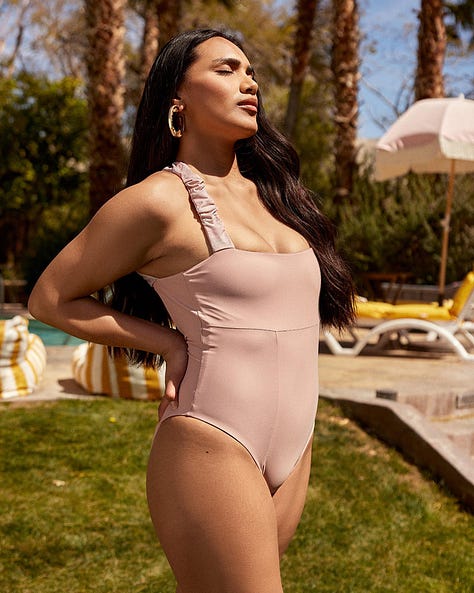
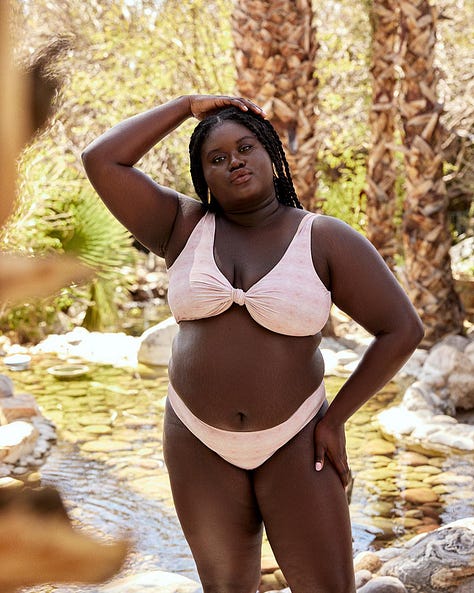

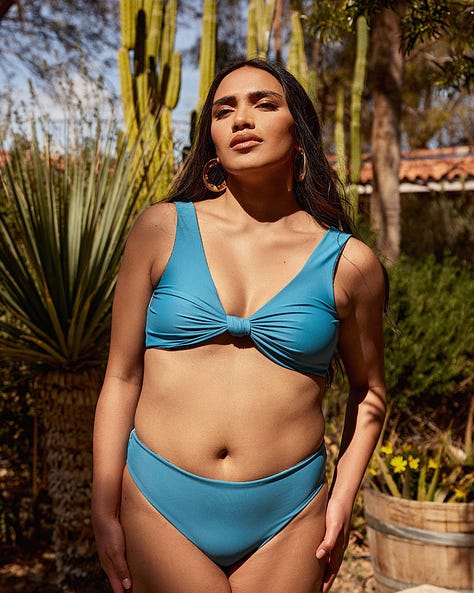
JB: On that note, I think it’s important to mention that you offer every piece in every size. So many drops that I see these days, it’ll have extended sizing for two of the five pieces and they're always the ones that are all black or full coverage or whatever. And I think that's just such a huge mistake.
TL: Yeah. Well, it's bullshit. If you're going to do it, do it. At that point, you might as well not even bother with it because I think it does more harm than good. It shows your true intention. I think that's the mistake so many brands make when they try to get into extended sizing— they just dip a toe in. They're very conservative about it. The customer is attuned to the bullshit. They can sniff it out from a mile away.
JB: I am curious - why do you think we are in the situation we are with big legacy brands not having extended sizing? Do you think any of their alleged reasons are valid or are they invalid? I certainly have opinions but I want to know what you think as someone doing so much with so fewer resources than they have.
TL: So, it boils down to a couple things. I think first and foremost, the way that these companies are working, they work so far ahead. And I don't think that they're willing to get off that constant wheel so they can make those adjustments.
I also think there's not enough people who are plussize themselves who are in a position to be able to advocate for that at C-Suite levels in those companies. And I think it’s also because of how disorganized a lot of corporations are. Because they're so massive and they have so many different departments, you have to get buy in from every single department for it to be a truly successful effort.
I do feel at the top there are also those implicit biases like we talked about. You have some people like Lululemon's founder who are very adamant that they don't want that customer shopping there and I think that can be said for other companies. They're probably just smart enough to not say that out loud.
Even with the data and statistics, with the average American woman being plus size, with the plus size market valued at something like $290 billion, the fatphobia is so strong that they’re willing to say I don't want your money even though it would make me richer.
JB: Yeah, I mean that's what it really boils down to for me. Those are also really interesting points from your perspective that I wouldn't have necessarily thought about from the technical and operational side of things. But to me, most often their lack of extended sizes is mostly because they don’t want to align their brand with fatness. They’d rather leave the money on the table.
As brands, they’re in pursuit of social capital by having this “aspirational” consumer base, and we don’t fit into that, according to them. All these decisions that brands are making really just exacerbate the reason we're in this position in the first place. They’re massively enforcing the status quo when they could be so instrumental in overcoming some of these societal obstacles and stigmas if they would just get over it and get on board.
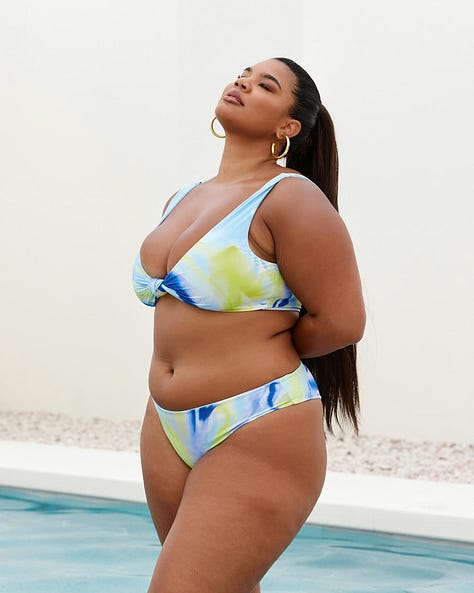
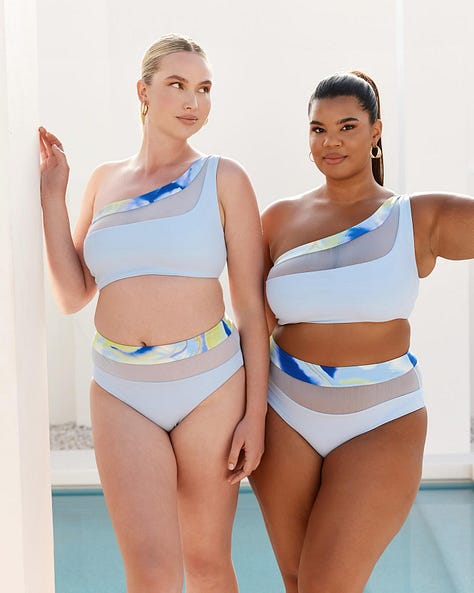
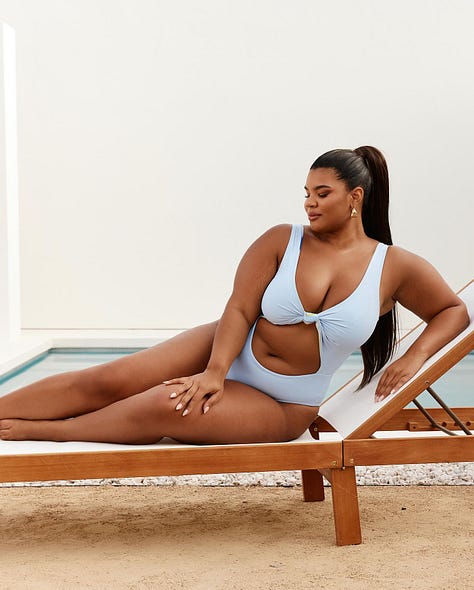
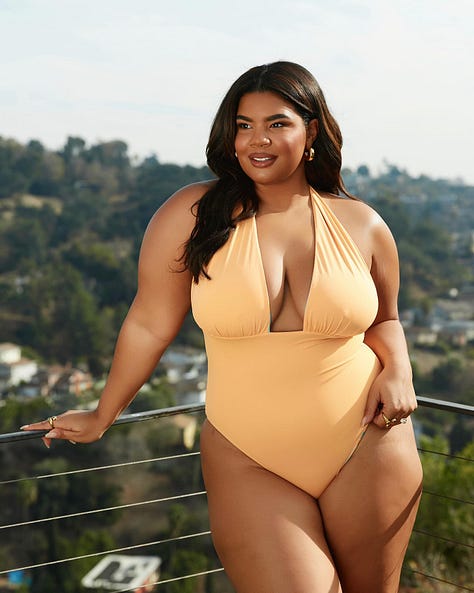
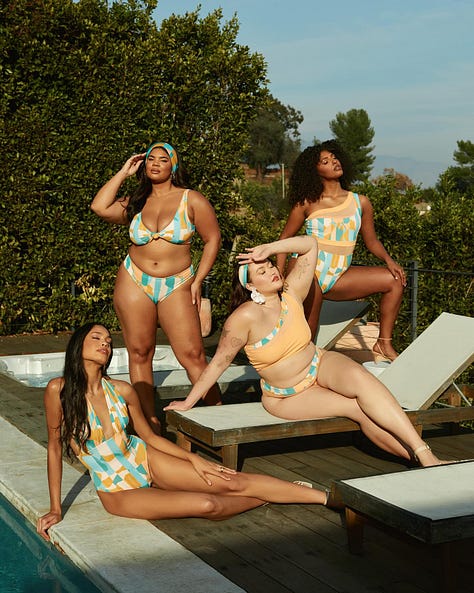
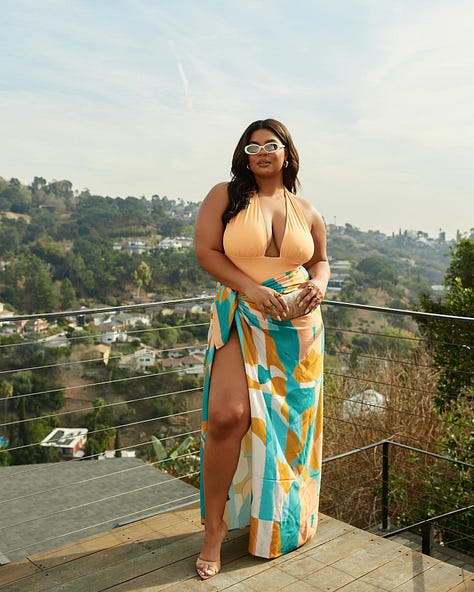
JB: I have a bit of a technical question for you that I know my readers are interested in knowing more about. This goes back to what we were talking before, but let’s talk about the difference between an XXL and a 2X, for example. A lot of people don’t realize that an XXL or even an XXXL is still a straight size. I feel like I see drops all the time lately that “have extended sizing”, but they top out at those sizes. I find it very misleading. What’s the difference between XXL/2X?
TL: An XXL would essentially be the next size up from an XL. They didn't do any sort of pattern breaks to make it plus size. Is it slightly bigger than an extra large? Sure. But the grade might only be those two inches that it is across all the straight sizes. Whereas with a 2X, there is an official pattern break. It's fundamentally different than the straight size pattern and it starts the chain into plus sizes with considerations for plus size bodies. So that's why if you tried an XXL and the fit is snug, it’s because it's fit on a straight size body, not on a plus size body.
JB: Right. And like you said, it might be a little bigger, but it doesn't take into account the proportions and the ways that larger bodies are different.
Another thing I think Nomads does so well is showing a wide range of bodies in your marketing and ecomm. I've worked at even plus size brands that refuse to cast anything beyond the very palatable version of the plus sized body. Completely unrealistic, no neck fat, flat stomach, huge boobs and hips. Very few of us look like that. Is it harder, would you say, to hire a diverse range of models like that for your campaigns?
TL: No.
JB: So it's truly just a choice.
TL: It's even less of an issue now because the plus size model market is so saturated. There are so many girls who are signed models now and run the gamut as far as build, how they carry their weight, all of those things. So there's no excuse.
JB: One last technical question while we’re on the topic of all these things that brands get wrong about inclusive sizing. Let’s talk about pricing. One of the excuses we hear so often from brands is that they won’t make extended sizing because it’s more expensive. Is there a marked price difference in your experience and if so, how do you tackle that?
TL: There have been very few instances where that has happened. I think China was pretty much the only place that charged more for larger sizes. It was never going to be a situation where I was going to make the plus size stuff more expensive. It just made more sense for everything to be all one price. Again, it's another slight to the plus size consumer when you do that. I don't think it's fair from a psychological standpoint.
JB: Absolutely. It seems like a moot point to me when you could just spread the additional cost, if there is any, across all sizes. On the topic of pricing, Nomads is in the premium / luxury space. Can you talk about why you chose this and why it’s important for us to have plus size options at this price point?
TL: We didn't start this way— I think our suits were around $125 in the beginning, but that's before we started using sustainable fabrics. Also, at that price point the market is very saturated. I knew I eventually wanted the brand to be more premium and more luxury because that is where you really don't see plus size representation, specifically within swim.
But the other reason for our pricing, because it's definitely not cheap, is our biodegradable and compostable fabrics that we use, which are more expensive. We also do seamless finishes and everything is of the highest quality because I am a quality stickler. I also wanted to leave room for us to be able to do wholesale. Because of the lack of options within retailers, I wanted Nomads to be in places where it was going to make a difference. So, for instance, we're with Anthropologie, we're with ShopBop, we're now with Nuuly for some of our resort wear pieces.
In every one of those instances, I would get the purchase orders back and they would stop at a 2X. I would have the conversations with the buyers and say, "Hey, if this is going to be our first introduction to your customer, I want the full size range to be represented because it's important." I’d remind them there are customers out there who are bigger than a 2X who do want to shop with them, even if they just do, you know, two to three SKUs to test it. Monitor it, do whatever you need to do. But it was so important to me that those sizes were included.
That involved them updating their internal companywide purchase ordering system. So while Nomads is doing the work on the direct consumer front, we're also trying behind the scenes to make the industry as a whole more inclusive, which is something that's super important to me, too.
JB: Which is amazing. Really what it all boils down to every. single. time. is that we should just have the same options at every possible turn. If you make larger sizes and it's priced at a higher price point sometimes people will say, "It's not accessible." And my response is that thin people have expensive swimsuits and they have cheap swimsuits they can buy. I should have those options too.
Once again, just like being a plus sized consumer doesn’t mean you don't want something that's revealing, it also doesn't mean that you don't invest in clothes and buy high quality things. I think it goes back to the biases towards fat people— that we aren't aren't wealthy, or we don't work hard, or we don't take pride in the way we look. It's so important that like every single step of the way you have these equitable options.
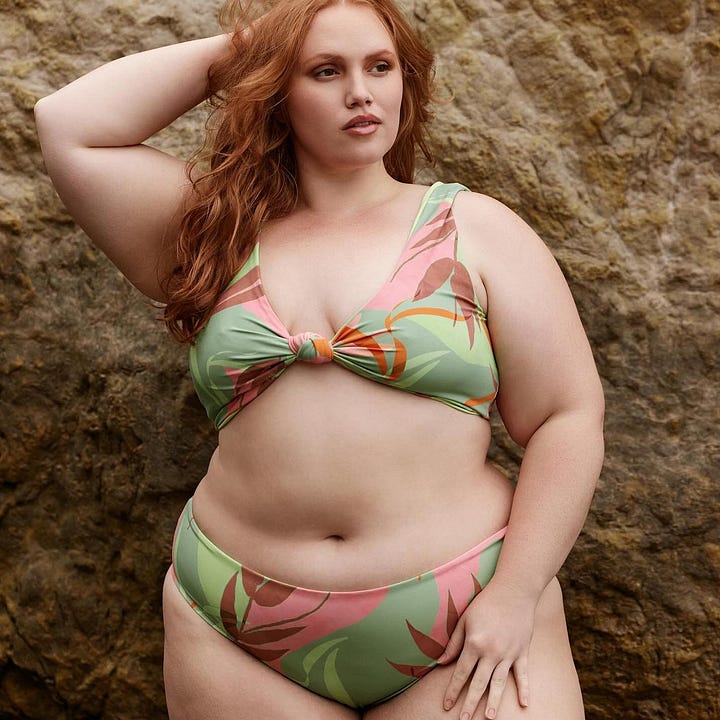

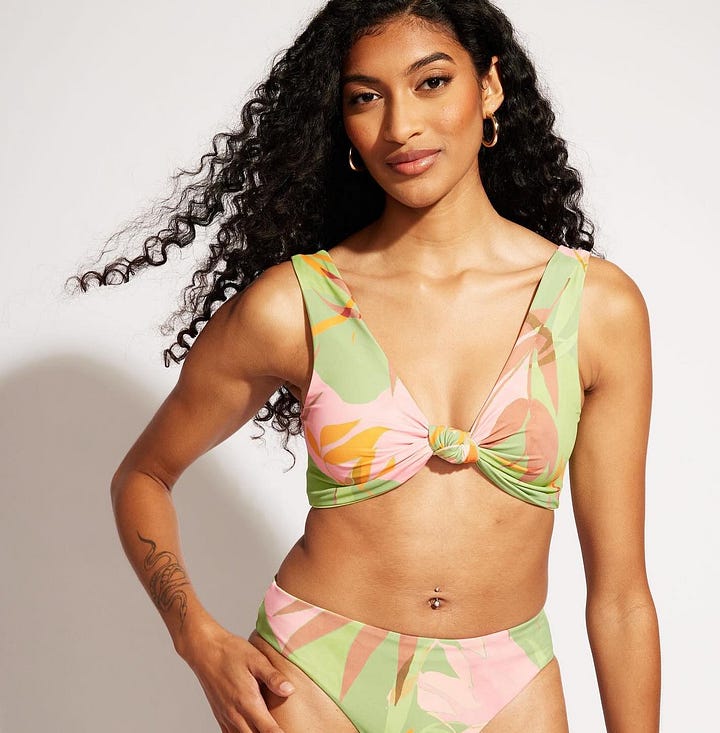
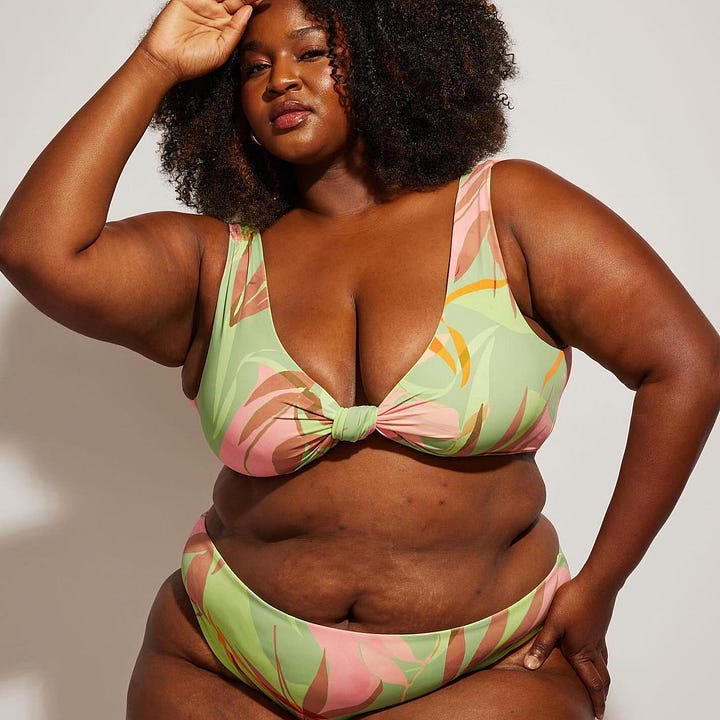
JB: So, here’s a fun one. We have obviously seen a major shift in rhetoric around the way we talk about bodies and weight loss and such in the last year or two. Do you feel like that has like reinvigorated you in your mission? How are you feeling about all of that?
TL: Oh, absolutely. You know, I think especially with like the rise of “thin is in”, the rise of GLP-1s, it really just makes me work that much harder. I read a statistic that said the average person only stays on a GLP- 1 for four years, and then after that, once you get off of it, you gain the weight back. So, it's not going to stay forever. They're going to need to have options still. And besides that, there are still people who don't want that, who don't aspire to thinness, who don't want to take drugs to lose weight.
I'm never going to not offer those sizes because there's always going to be someone that needs them. It is really crazy to see though. I mean, just in the five years since I've been doing this, it's been a complete pendulum swing.
JB: And I think it's it's easy for us as people who work in the industry, people who live in big cities to get caught up in all of this, but what you forget is that there are lots of people outside of that bubble who are existing in the bodies that they've always existed in and will continue to exist in.
Something that I hear a lot lately is people like saying that brands actually should be reducing their size ranges because people are getting smaller, which is absurd. Think also about all of the people who don’t have access to these drugs, and, like you said, those of us who don’t aspire to shrink. Spoiler alert - not everyone does, no matter how much it can seem that way sometimes.
Okay, getting towards the end here with a few quick ones.
What’s a brand that doesn’t have inclusive sizing that you wish did?
TL: God, there's so many.
JB: Like, every brand.
TL: Cult Gaia is top of the list for me, but I don't think they ever will. And that's why I want Nomads to be the inclusive version. But the only thing I can fit is accessories. The aspiration of it, the luxuriousness of it, all of it. It is very much what I would aspire for my brand to be.
JB: Who is your number one person that you would like to see in a Nomads suit?
TL: I mean, Queen Bey, that would just make my life complete.
JB: Of course. But on the flip side of that though, you have had a lot of very exciting people in your designs, especially lately. Is there anybody you’ve crossed off your list that you're really excited about?
TL: So many. Serena Williams. Tabitha Brown. Tamron Hall. They were all on my 2025 celebrity bingo card. This was this was the year I said “I want celebrity placements, damn it!” So yes, very very excited about those.
JB: I feel like the rate of celebrities in Nomads is rapidly increasing and I can’t wait to see who wears it next.
What are some of the like highest highs that you've had since you started the brand?
TL: I mean, those celebs are really hard to beat—because not only were they wearing the pieces, but they took the time to tell me or to post about them and share how much they like them. They have enough money to wear whatever they want, so for them to like the stuff that much really speaks to the quality. So I'm glad that's being recognized.
I think one of our suits making it into Sports Illustrated Swimsuit, not just in any issue but the 60th anniversary issue, was major. And for it to have been on Hunter McGrady, who is truly a plus size woman. I don't even have a word to describe how exciting that was.
TL: And then our wholesale partnerships. As a small brand those are really exciting. This is the year I finally feel like I'm like hitting my stride and getting somewhere, and it is a testament to how long it really does take to see all of your efforts pay off. Sometimes people do have overnight success but that has not been the case here. It's definitely been very steady and there have been moments where I'm like why did I do this? But I definitely don't think I'd be happy if I hadn't done it.
JB: Well, and on the overnight success of it all - there's always something behind the scenes that you don't know about. Generational wealth or something, you know?
TL: Especially within the swimwear space, the amount of brands that are either VC backed or the founder's husband is a rich whatever— that's not my life.
JB: Also on the celebrities of it all and the fact that they are so vocally positive about the brand— I'm obviously focusing on one aspect of Nomads because that's what I do, but it's not the only aspect. You’ve created something so amazing in so many ways. Everybody loves the way that it feels to the touch, feels on the body, the amazing quality. The sustainability from the compostable and biodegradable fabrics. Don't want all of that to get lost in my focus on one particular thing.
TL: Well, what's interesting about that too is that, with the exception of Hunter, all the other celebrities I've mentioned are straight size.
A question I get asked a lot, especially when I'm talking to investors, is “does the fact that the brand is size inclusive turn off straight size customers?” And it's actually the opposite. Which I guess is hard for people to believe, but I've had people tell me that they prefer to shop with brands that are inclusive because they can recommend it to their friends of various body types. If that is something that they're turned off by, that's not my customer.
JB: That's a crazy question. That's something that would never cross my mind.
TL: I've had people ask me if plus sized people go to the beach. I'm like… "Yes."
JB: Yeah, just goes to show like how little understanding there is of the plus customer. So wild. Shopping at brands that everyone can shop, even if you’re a size that doesn’t restrict your options, is allyship! Support the causes that you care about with your wallet!
Is there anything that you’re working on right now you’re excited about?
TL: The nice thing about doing this is that I'm able to take all of my learnings from Nomads to help other brands, organizations, agencies, and retailers become more inclusive. I came on to Fluffi as a partner at the beginning of the year, which is a body diversity and size inclusivity agency. We're having some really great conversations right now with some really big brands. It’s just another way in which I'm trying to push not just the fashion industry but other industries forward, because it's a systemic issue. It spans across everything. I'm continuing to try to do my part to make not just the world more inclusive.
JB: That's amazing. Yeah, I feel like fashion is such an obvious one, right? But something I talk a lot about here is beauty brands. When a beauty brand has a fat person in their ads, I'm like, "Oh, you actually care.” There's no size limit on blush, but you're showing it on like a a bigger body simply because you prioritized inclusivity. I think that's really cool.
TL: It’s beauty, it's airline industries, stadium seats. I mean it's everything.
JB: Yeah. The world is not made for us. So, that's really really incredible and needed work.
And lastly, I know we've mentioned it a few times, but the anniversary. Is there anything you want to share about like how you're celebrating your five years?
TL: We will be doing a multi-day popup at the Shopify store in Soho in New York on Greene Street from Friday 7/25- to Sunday 7/27, 11AM to 6PM. We will have all sizes and different collections available— our nude collection, black suits, prints.
It's going to be very, very fun. We’re also partnering with Pound Cake Beauty, which is an inclusive beauty brand, as well as DIFF Eyewear. So, they are going to have some of their items as well. Come out and shop with us!
Note from Jo: You can always shop the brand on their website - and be sure to follow Nomads on Instagram. Being an engaged follower is a fantastic way to support brands!
If you’re here for a new perspective on fashion, beauty, and culture, you’re in the right place. Pull up a chair. The table is wide, and the conversation is layered.



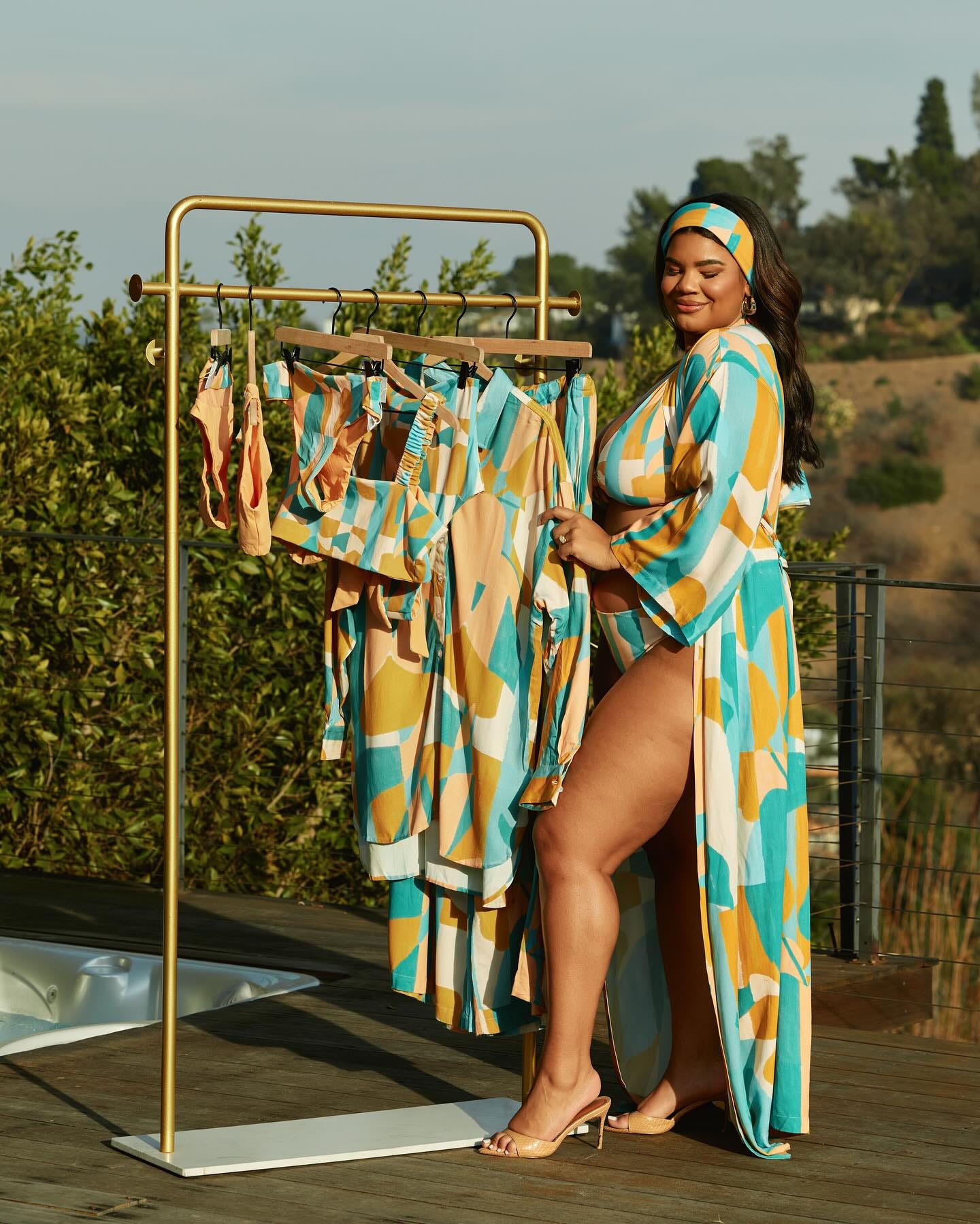
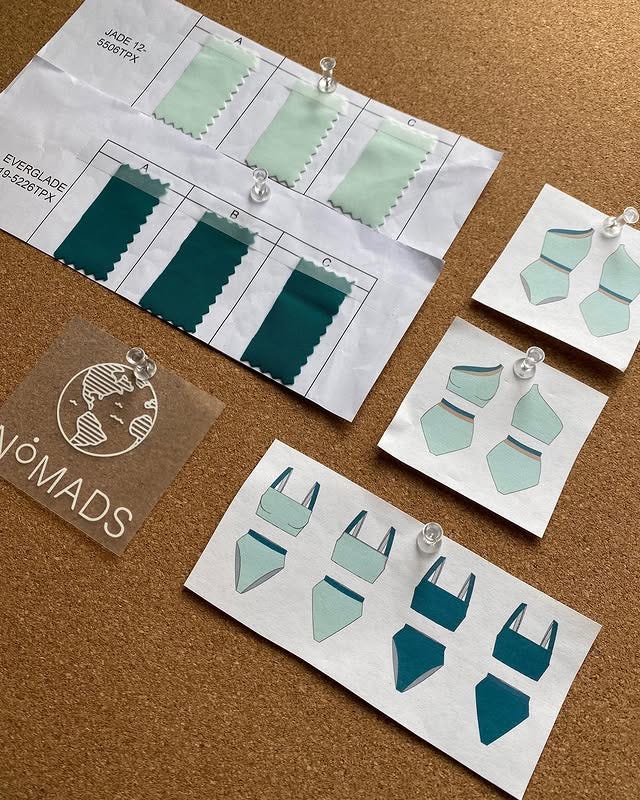
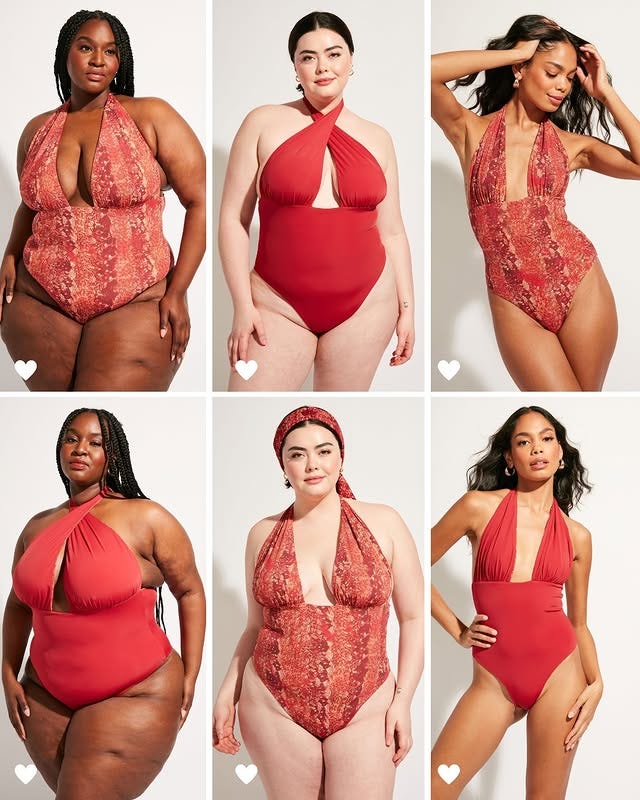
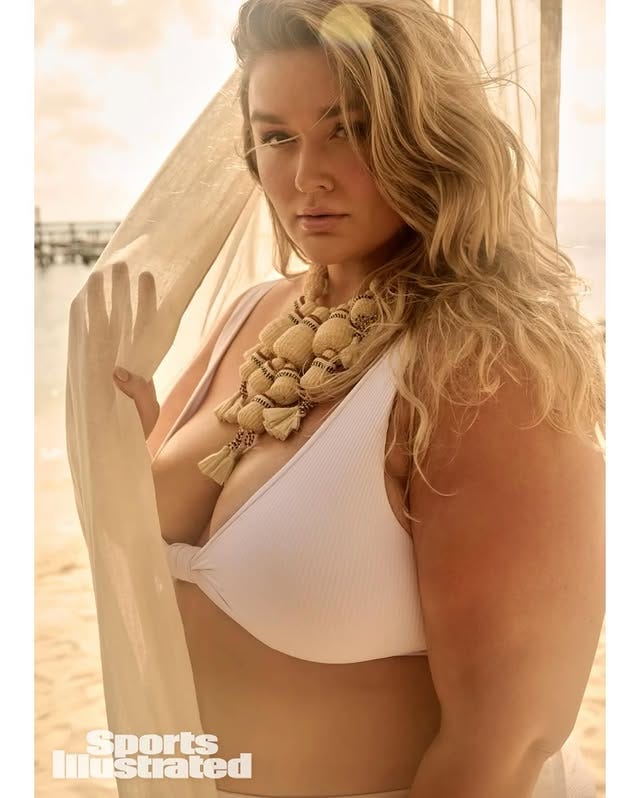
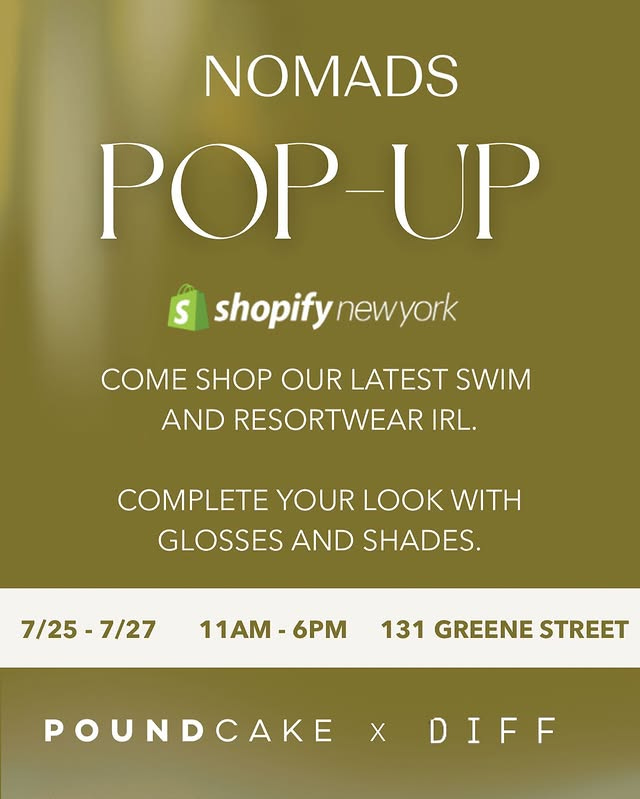
this was so informative! nomads is aspirational for sure, i know what I’m saving up for next summer. thank you!!